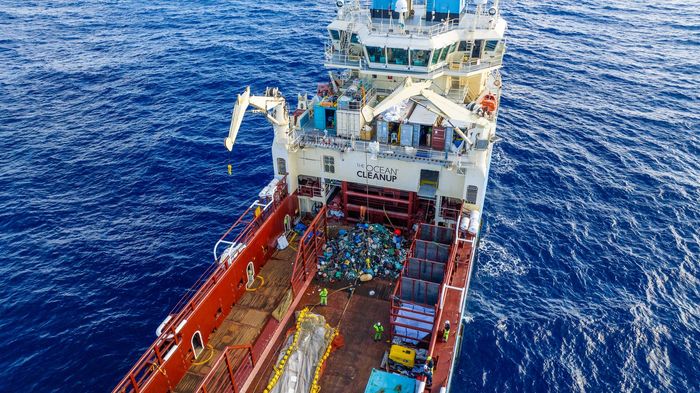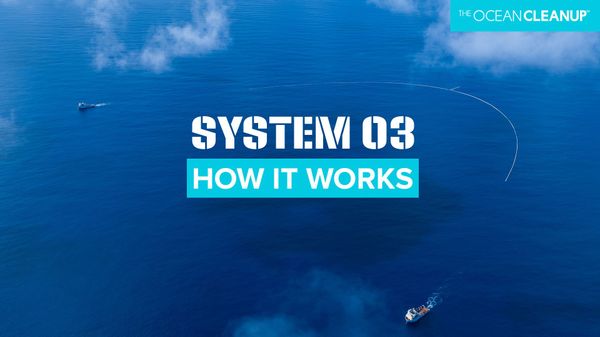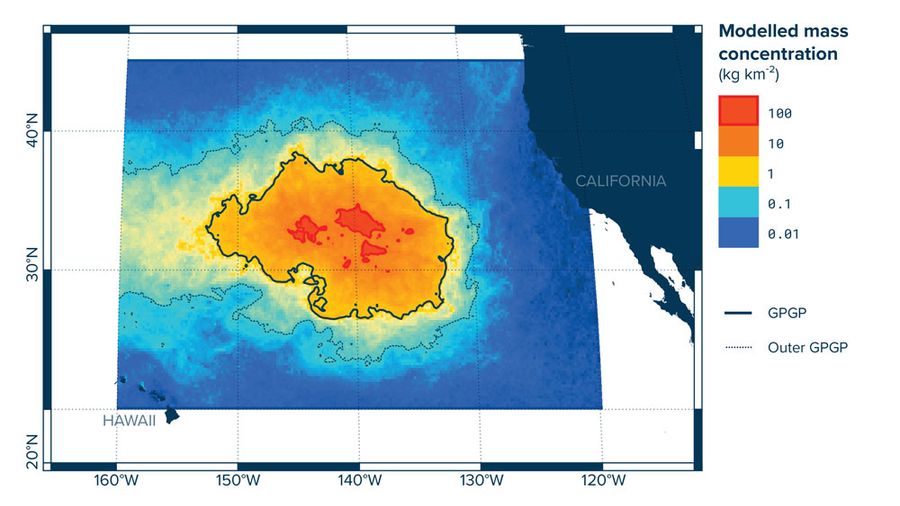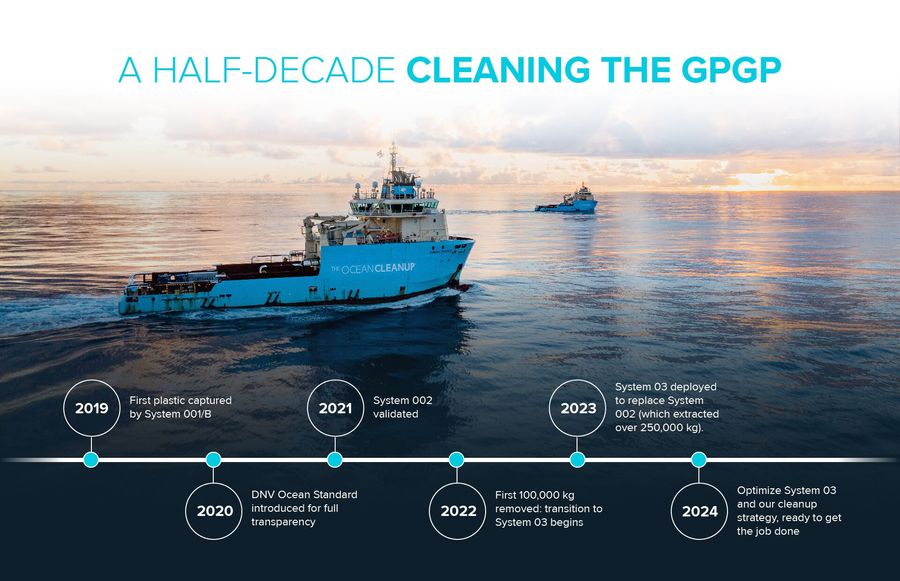
The Ocean Cleanup Returns to Great Pacific Garbage Patch for Most Ambitious Year Yet
Back to updatesThe Ocean Cleanup has returned to the Great Pacific Garbage Patch with an upgraded and optimized System 03. This is a crucial year in which we aim to show the world that our solution is ready to clean the entire GPGP – and that with the right support, we can scale up to a fleet of systems and get the job done.
The Ocean Cleanup is a global non-profit project with the mission to rid the oceans of plastic. To do this we target the largest accumulation of floating plastic on Earth – the Great Pacific Garbage Patch (or GPGP), located between Hawaii and California.
Our goal in 2024 is clear: to optimize System 03 and show we are ready to deploy a fleet and clean the entire GPGP. If we can achieve our desired levels of performance, we believe that as few as ten such systems could be enough – and this year we intend to prove that our technology is ready for scale.
SYSTEM 03: BACK IN THE PATCH
It is difficult to fully comprehend how gigantic the GPGP is, or just how much plastic it contains. Spanning an area double the size of Texas (triple the area of France or Thailand), it is estimated to contain about 100,000,000 kilograms of plastic debris.
To tackle such a massive area will require a fleet of massive cleanup systems. Developing and deploying those systems is at the core of The Ocean Cleanup’s mission.
Following the lessons and experiences gained from our prototype System 001, we began consistently extracting large amounts of plastic with System 002 – proving that large-scale cleanup of the GPGP is possible.
With such a huge area to clean, size matters: cleaning the GPGP becomes more economical with larger systems. So in 2023 we tripled the size of our system to achieve the performance required to prove viability – and prepare to scale up.
Our current solution – which we call System 03 and is currently deployed in the GPGP – is around 2.5 kilometers (1.4 miles) in length and capable of cleaning an area of ocean equivalent to a football field every five seconds.

FROM ZERO TO 350,000 KG: CLEANING, LEARNING AND IMPROVING
After years of research, The Ocean Cleanup’s System 001/B removed our first plastic from the GPGP in 2019. With long-term partner Maersk and its two support vessels Tender and Trader, we’ve repeatedly returned to the GPGP to continue the cleanup of this massive environmental disaster.
We have now removed a verified total of over 345,000 kilograms of plastic (over 760,000 lbs – more than twice the bare weight of the Statue of Liberty) over 18 trips to the GPGP so far, all returned to shore for processing and a new life courtesy of our valued partners.
While this represents only a third of a percent of the mass of plastic in the GPGP, these trips demonstrate that our system works, and provide us with valuable insights on how to more effectively harvest this pollution. This is further evidenced by the steady increase in cleanup performance over the years – giving us confidence for 2024.
OUR TARGETS FOR 2024: 100 KG/HOUR AND INCREASED CLEANING UPTIME
We are aiming this year for System 03 to consistently reach at least 100 kg/hour removed from the GPGP.
Monitoring our performance is essential to identify how we can improve. Two key metrics are helpful: measuring the amount of plastic we extract in kilograms per hour gives us a high-level view of whether our enhancements are fulfilling their aim of making System 03 more efficient. We also track our uptime – meaning the proportion of time the system is deployed and actively cleaning (and not including transit, extraction, etc.).
Last year System 03 reached a peak level of 75 kg/hour of plastic extracted – an all-time high for us in the GPGP and evidence that our improvements to hotspot targeting are having a positive impact on our performance. This follows our findings showing that plastic is not distributed evenly throughout the patch.
During the winter onshore period, we identified other efficiency gains and improvements which we will incorporate into System 03 this year. Our modeling shows that these optimizations, alongside continued technology upgrades and steering strategy improvements, would allow us to realize our plan of cleaning the entire GPGP with 10 systems – possibly in as little as 10 years.
In 2024, maximizing the performance of System 03 by increasing uptime and capture efficiency, while improving our ability to target areas of high plastic density, will be the key drivers in reaching our objectives in preparation for scale-up.
A MAKE-OR-BREAK YEAR FOR THE GPGP
We believe this will be the year we show that our solution to the Great Pacific Garbage Patch is a reality, and that we are ready, with our supporters and partners, to begin scaling up and finishing the job.
Over 9000 kg removed from the Great Pacific Garbage Patch in our 93rd plastic extraction: pic.twitter.com/Bgvp0TaycG
— The Ocean Cleanup (@TheOceanCleanup) April 8, 2024
We’ve come a long way since System 001 was first trialed in the North Pacific Ocean in 2018. All of this progress, and every kilogram removed from the ocean, is because of millions of supporters around the world who have made our progress possible through their support and donations. We are grateful for this trust, and we intend to deliver on it.
This year, we plan to tell the world that after years of development, we are ready to clean the Great Pacific Garbage Patch. Stay tuned to theoceancleanup.com and @theoceancleanup to follow System 03 for our most urgent and ambitious cleanup so far.




